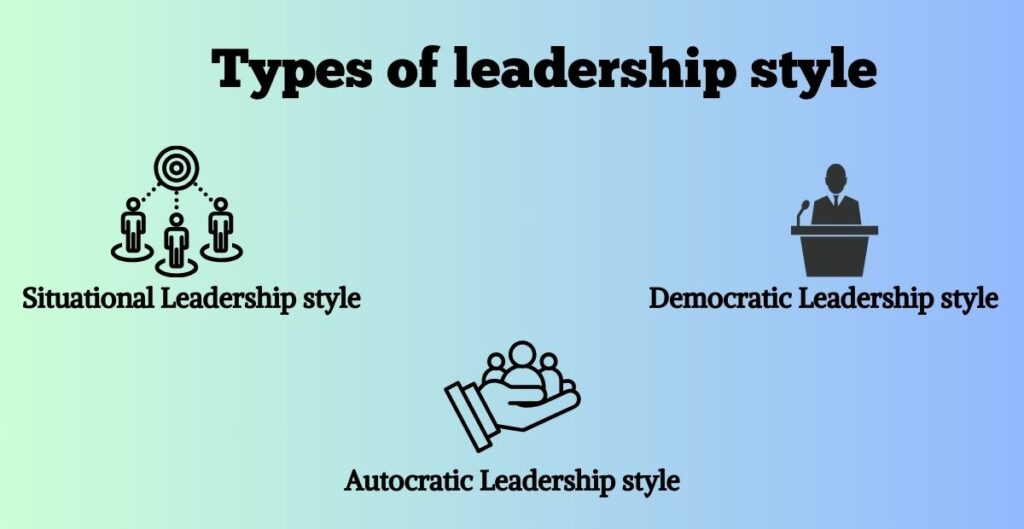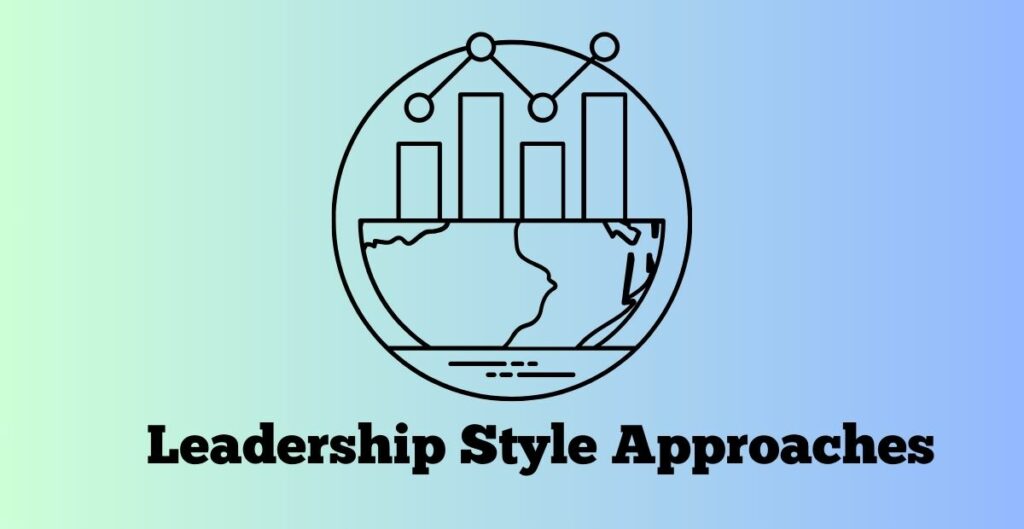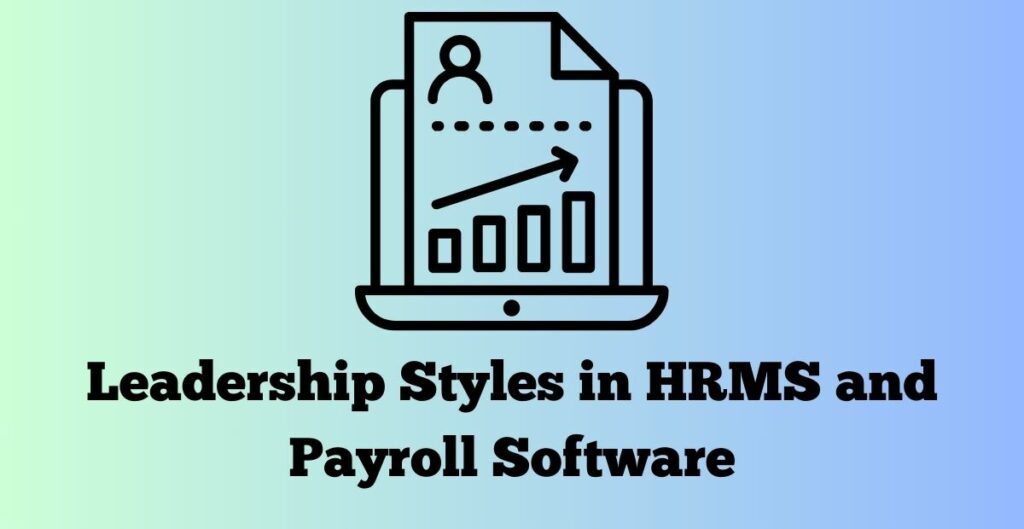Understanding Leadership Styles
The proper kind of leadership is key when you witness it leading the entire group to either become successful or finally fail to meet the goals of the organization. Nevertheless, leadership style regarding this doesn’t express just one variant; it is a multifaceted phenomenon based on different styles and methods of handling issues. Being aware of the distinctive concepts of this leadership type is a crucial point for a leader allowing him/her to adjust the approach according to the specific of the situation and create a healthy corporate culture. Let’s explore these concepts further:
Exploring Different Leadership Style Approaches
- Authoritarian Leadership style: It is characterized by dictatorship or one-man leadership where a boss takes responsibility for summoning the best decision-making without involving the team members. Although it could perform at its best in emergencies that require quick decision-making and thinking under pressure, the command structure can be opposite to democracy, which inhibits ingenuity and freedom among the team members.
- Democratic Leadership style: It is in stark contrast to authoritarian leadership because democratic leaders, unlike merely making key decisions, engage team members in the process of decision-making. The involvement of employees will increase partnership and employee empowerment feeling and shared vision and commitment to corporate objectives.
- Transformational Leadership Style: Visionaries’ leadership is defined by their ability to spark passion and drive among the employees through clearly stated objectives and more importantly empowering them to help achieve those objectives. They promote innovation and provide a culture of continuous improvement and the development of lasting relationships among them hurting trust and respect.
- Servant Leadership style: Servant leadership dwells on the employees’ agenda first, as opposed to making their own needs the priority. It’s all about working for others, including providing support and developing team members to their limits. This method, on its part, reduces distrust, thereby increasing job satisfaction, and giving rise to a human relations culture that emphasizes empathy and supporting each other positively.
- Transactional Leadership style: Transactional leaders stress making up the minds of the employees to accomplish objectives and then reward or sanction them depending on their performance. This type of leadership style however tends to produce immediate results and stability in the organization but it may not support long-term creative and innovative growth.
Recognizing the Impact of Leadership Style on Organizational Culture
- Culture of Innovation vs. Stability: The type of leadership style decisions can be either shaped or changed by the organizational culture in various ways. Small enterprises living in constant fear of running out of stocks find such approaches to leadership invaluable. These are transformational and democratic leadership styles that foster innovation through creative and risk-taking thought. On the other hand, dictatorial and managerial leadership styles may be found in societies, which are ruled by order and sticking to the regulations that are in force.
- Employee Engagement and Motivation: My leadership preferences have more to do with employee engagement and motivation levels and enact that within the organization. Servant and transformational leadership styles that emphasize the importance of developing the employees both above and from within, as well as providing empowerment to team members are more likely to produce higher levels of engagement and motivation among workers.
- Communication and Collaboration: Communication and collaboration that facilitate success in the organization are to a large extent emanating from the situation. Democratic leadership styles, which give space to people for active involvement and interaction with leaders, help in the creation of a solid team. In contrast to autocratic leadership which channels decision-making power on select individuals, there is a breakdown in communication and collaboration.
- Employee Retention and Satisfaction: It is the leadership style that contributes to the retention rate and often the level of employee satisfaction. A kind of leadership style that goes with servant leadership, in which workers themselves are considered as the main factor, gives more happiness and loyalty among employees as contrasted to some other types of leadership employment such as authoritarian or transactional.
Assessing Your Leadership Style
Conducting a Self-Assessment of Your Leadership Style Preferences:
- Reflect on Your Leadership Style Interactions: You should take some time to look back over your past leadership experiences and examine the various interactions you have had. Write down how you have been functioning in leadership positions before, what methods you have applied for problem-solving, and what the effects were.
- Review Feedback: Get advice from people you trust, mentors, and your team members about your leadership approach. The input from these individuals will enable you to assess yourself and reflect on effective leadership style strategies that could be adopted.
- Utilize Leadership Style Assessments: One of the effective ways you can look into the matter is by utilizing various leadership assessment tools or surveys to look at the subjective leadership preferences from a neutral side. Such tools will be able to give you valuable feedback and they can help you find potential patterns in your leadership behavior.
Identifying Your Strengths and Areas for Development in Your Leadership Style
- Areas for Development in Your Leadership Style: For example, identify ways to adjust your leadership style to meet challenges better. This might involve advanced communication skills, good adaptability to change, management by delegation, or any other skill that comes in handy to the leader.
- Feedback Analysis: Examine the comments given to you concerning your leadership style, paying specific attention to what resonates with your style and what does not. Seek recurrent feedback given in both routes, whether positive or negative, to find out the areas you should concentrate your efforts on development.
- Goal Setting for Leadership Growth: Based on your self-evaluation, derive clearly defined aims that will help you pave growth in leadership style. What skills and behaviors are you after and why did you choose them? These are the qualities you should focus on if you want to be a more effective leader of people.
Leadership Styles in HRMS and Payroll Software

Integrating Leadership Style Development Features in HRMS Platforms
- Transformational Leadership Style: HRMS platforms can include features that are supportive of the transformational leadership style which is mainly establishing communication channels, collaboration, and idea sharing among employees. Attempts like the establishment of forums for employees, suggestion boxes, and recognition programs promote a culture of innovation and continual improvement.
- Servant Leadership style: Norms of servant leadership may be easily infused with the platforms of HRMS via the modules relating to employees’ welfare, growth, and engagement. Organizations can manifest who they truly are by providing benefits like wellness programs, workforce development resources, and mentoring plans that signal their commitment to the whole development of the workforce.
- Democratic Leadership style: The HRMS platforms can initiate democratic leadership through online tools that fuse employees’ voices into the process of decision-making. Features including employee surveys, feedback systems, and voting platforms allow employees to contribute their ideas and opinions which is more than just empowerment. It helps them to feel fully on board and responsible.
Leveraging Payroll Software for Leadership style Support and Decision-making
- Transformational Leadership style: Besides enhancing the ability of transformational leaders to make decisions, payroll software can also give leaders the ability to get real-time data and facts. Managers can utilize this data for spotting trends, performance evaluation, and taking action based on superior decision-making that is in line with the organizational strategy.
- Servant Leadership style: The use of payroll software helps in reinforcing servant leadership by ensuring transparency in the payment and benefit allocation, and fairness in the compensation system. In the conduct of practices like online self-service portals, reward statements drawn from total remuneration, and award-based incentives, the company shows how it appreciates and remunerates the input of employees appropriately.
- Democratic Leadership Style: Digital pay systems can boost the democratic wing of management by giving the leaders the helping tool for accessible budgeting and resource arrangement. Apparatuses such as low-cost planning modules, expense monitoring systems, and organized reporting instruments are initiatives for leaders who engage employees in financial-related decisions, thus building credibility and accountability.
Transformational Leadership Style: Inspiring Change
Transformational leadership is a leadership style that influences change and growth in organizations, as well. The consideration of its characteristics and practical implementation of HRM principles through HRMS tools will eventually contribute to leadership development and a higher level of organizational success.
Characteristics of Transformational Leadership Style
- Visionary Leadership: Charismatic leaders interpret plans to the general public and touch their hearts so that they may admire the new ideas and perceive the changes as positive transformations.
- Charisma and Inspiration: They are gifted in carrying the charisma and the capability of getting people more excited and enthusiastic through their passions, optimism, and even the use of modesty and compassion.
- Individualized Consideration: Transformation-shaped leaders deliver real concern about each team member’s well-being as well as bring up their skills leading to an atmosphere of trust and support.
- Intellectual Stimulation: They inspire creativity and innovation by questioning norms, making people think and defend their positions, and developing order and a creative mindset.
Implementing Transformational Leadership Style Principles Using HRMS Tools
- Vision Communication: The functions of an HRMS system (as being best facilitators) are for communication of the organization’s vision, goals, and performance through features like company announcements, goal setting, and performance dashboards.
- Leadership Development Programs: HRMS tools can contribute to leadership skill development through the creation of multiple training programs that can be customized and personalized for different users, as well as leadership assessments and coaching modules that will focus on developing the required skills for the transformational style of leadership.
- Employee Engagement Initiatives: Such HR Management Systems are open to implementing transformational leadership elements with the help of these tools to create an employee-based environment. For example, tripping through employee feedback surveys, recognition programs, and suggestion boxes produces an environment for inclusion and teamwork.
- Performance Management Systems: HRMS platforms may also support performance management, the application of transformational leadership principles. Fundamentals like performance evaluation, self-checks, and target setting immensely benefit the employees’ growth at the workplace.
Servant Leadership Style: Putting Others First
Principles and Values of Servant Leadership style
- Empathy and Compassion: Empathetic and pain-sensitive servant leaders place the welfare of their followers at the heart of their priorities, taking time to attend to the needs of their team members personally and professionally.
- Service Orientation: They forgo their individualism for the common good by actually meeting the needs of all the people who are stakeholders in the success of the team.
- Empowerment and Development: Collaborative leaders not only entrust their team with decision-making tasks but also allow them to step up and take full ownership of their work, building a vivid picture of autonomy, trust, and accountability.
- Collaborative Decision-Making: These practices compel team members to participate actively in decision-making, by seeking their thoughts and views to make decisions that support and promote the organization, the means, and the values it represents.
Incorporating Servant Leadership Style in HRMS Processes and Team Management
- Employee Development Programs: HRMS platforms can back the ideals of servant leadership style values by supplying comprehensive development programs to employees. These programs, for instance, offer chances for training, addressing situations, and mentorship to improve employee’s skills and individual growth.
- Performance Management Systems: Using a servant leadership mindset when designing a performance management system within an HRMS platform, can help to focus on continuous feedback, recognition of contribution, and aligned goals with the organization’s mission and values.
- Communication and Collaboration Tools: HRMS systems can be applied in the company so that team members may engage in open communication and co-work better, develop channels for sharing ideas, giving feedback, and working for an inclusive culture.
- Recognition and Rewards Programs: Humanized leaders acknowledge the efforts and efforts of their team members through the implementation of recognition programs with incentives linked to the HRMS systems which promote a culture of appreciation and value for contribution actions.
Types of leadership style
- Situational Leadership style: The principle offers the possibility of leaders revisiting their style at the situation and employees’ readiness for the change. HRMS integrates such features as complex analysis of interpersonal relations in teams, potential and skills of individuals, and the main needs of the current or future projects into the system. Leaders will then be able to show what option they adapt to improve the effectiveness of their leadership style.
- Democratic Leadership style: Fosters shared understandings and promotes shared responsibility in the decision-making process. Use our artificial intelligence to write for you for free (without any hassle or boundaries). “The purpose of a business plan for a startup is to provide a roadmap for organizational objectives and the resources required to achieve them. This document is essential not only for entrepreneurs but also for investors, financial institutions, and partners who may consider becoming One of the many perks of using entrepreneurial ways in modern companies lies in the sector of the fact that the level of employee involvement, inventiveness and ownership of issues is ever increased. Along with a democratic leadership style, HRMS can be used for effective communication in the whole company, receive feedback, and build up the possibility of decentralized decision-making.
- Autocratic Leadership style: Implies being involved in power taking and in minor to no involvement of others. Although it might be beneficial in those cases, the flip side of it is diminished employees’ morale, fulfilment, and work satisfaction. In the cases where autocratic leadership may be suitable for HRMS decision-making managers or owners can instead turn to urgent or high-risk tasks where it is necessary to make fast and precise decisions.
- Coaching Leadership Style: Developing Talent
Leveraging HRMS Tools for Employee Development and Mentorship Programs
The HRMS system is exactly the support for the coaching leadership, a very valuable and important resource. Leaders get various tools for monitoring, setting, and providing reminders to their employees. Similarly, HRMS makes it possible to conduct mentor-mentee programs that bring mentors and mentees together for communication purposes, provide communication tools, and manage the mentorship results. Taking advantage of HRMS tools, it is possible to carry out the principle of the coaching leadership style and create the right type of culture where the individuals are persistently learning and developing.
Characteristics of Coaching Leadership
- Guidance and Support: Leadership coaching nurtures team members, offering direction and feedback to experiential learning and skill awareness.
- Active Listening: They attentively give an ear to what their team members have to say, connecting with them on a level that teems with an understanding of their needs, fears, and hopes.
- Feedback and Growth: Training leaders get in touch with open communication and provide feedback as well as growth opportunities, thus, cultivating a climate conducive to continuous improvement.
- Empowerment: In this way, they give a person a chance to feel that he/she is in charge of what is happening around him/her and responsible for his/her decisions.
- Goal Setting: Coaches of the leaders work closely with team members entrusted with defining goals that are not only achievable but also consistent with the overall objectives of the organization.




